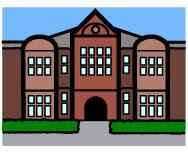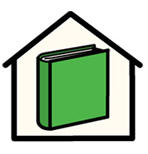- You are here:
- Home
- About Symbols
- Introduction to Symbols
- Symbol sets
Introduction to Symbols
Symbol sets
Collections of symbols that cover a wide vocabulary are called a 'symbol set'. Most symbol sets are designed to follow a coherent set of design rules to provide consistency, which assists the decoding of meaning.
Symbol set design
Symbols are designed so that it is simple to decode their meaning. This is especially apparent with representational symbols such as 'phone' or 'drink' that are shown below.

When ideas are beyond common nouns or verbs, the underlying schema becomes incredibly important. For example, an office is represented by a stylised building containing a desk, so a building containing a book can be logically interpreted as a library. If the symbol for a library was a 'picture' of an actual library building, its meaning could be confusing for people who don't use that specific library.

Library photo

Library illustration

Library symbol
A schema is important in large symbol sets because it allows for the design of consistent symbols which can be decoded to access their meaning in a way that can be learnt easily. It means a user does not have to learn all the available symbols, just the rules that are used to make them. For example, a librarian is symbolised as a 'person with a book', a library is a 'building with a book inside' and a bakery is a 'building with baked goods'. A store always has a little till in the same place to signify that goods can be purchased there.
Read more About the Widgit Schema

Symbol set purpose
Symbols sets may also be created for a specific purpose. Some symbol sets are designed specifically for face-to-face communication, whilst other sets are intend to be understood in printed form, even when there is no communication partner there to mediate.
Different symbol sets also cover different vocabulary appropriate to their purposes. Which symbol set a person should choose depends entirely on their needs and preferences. The most important thing to remember is that everyone is different, with different abilities in spoken and written language, expression, vocabulary, sight, hearing and other individual factors.
Intro home | Next - How symbols are used
